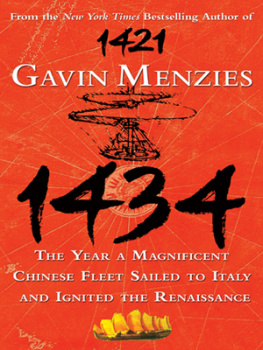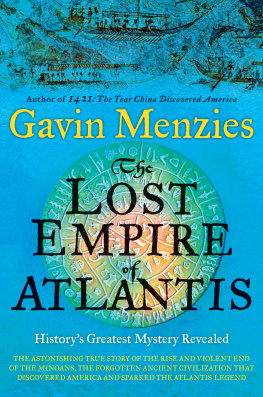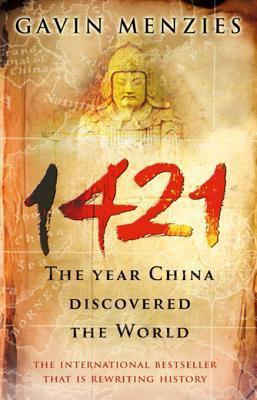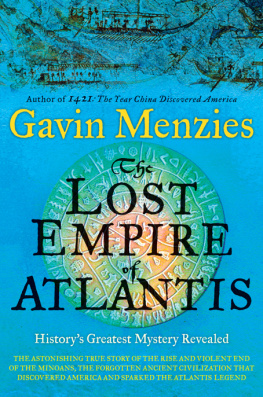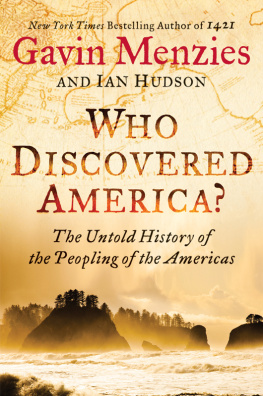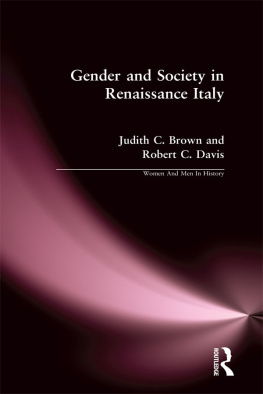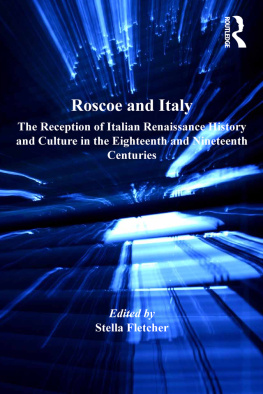Gavin Menzies - 1434: The Year a Magnificent Chinese Fleet Sailed to Italy and Ignited the Renaissance
Here you can read online Gavin Menzies - 1434: The Year a Magnificent Chinese Fleet Sailed to Italy and Ignited the Renaissance full text of the book (entire story) in english for free. Download pdf and epub, get meaning, cover and reviews about this ebook. year: 2009, publisher: HarperCollins, genre: Art. Description of the work, (preface) as well as reviews are available. Best literature library LitArk.com created for fans of good reading and offers a wide selection of genres:
Romance novel
Science fiction
Adventure
Detective
Science
History
Home and family
Prose
Art
Politics
Computer
Non-fiction
Religion
Business
Children
Humor
Choose a favorite category and find really read worthwhile books. Enjoy immersion in the world of imagination, feel the emotions of the characters or learn something new for yourself, make an fascinating discovery.
- Book:1434: The Year a Magnificent Chinese Fleet Sailed to Italy and Ignited the Renaissance
- Author:
- Publisher:HarperCollins
- Genre:
- Year:2009
- Rating:4 / 5
- Favourites:Add to favourites
- Your mark:
- 80
- 1
- 2
- 3
- 4
- 5
1434: The Year a Magnificent Chinese Fleet Sailed to Italy and Ignited the Renaissance: summary, description and annotation
We offer to read an annotation, description, summary or preface (depends on what the author of the book "1434: The Year a Magnificent Chinese Fleet Sailed to Italy and Ignited the Renaissance" wrote himself). If you haven't found the necessary information about the book — write in the comments, we will try to find it.
1434: The Year a Magnificent Chinese Fleet Sailed to Italy and Ignited the Renaissance — read online for free the complete book (whole text) full work
Below is the text of the book, divided by pages. System saving the place of the last page read, allows you to conveniently read the book "1434: The Year a Magnificent Chinese Fleet Sailed to Italy and Ignited the Renaissance" online for free, without having to search again every time where you left off. Put a bookmark, and you can go to the page where you finished reading at any time.
Font size:
Interval:
Bookmark:
This book is dedicated to my beloved wife, Marcella,
who has traveled with me on the journeys related in this book
and through life
O ne thing that greatly puzzled me when writing 1421 was the lack of curiosity among many professional historians.
After all, Christopher Columbus supposedly discovered America in 1492. Yet eighteen years before he set sail, Columbus had a map of the Americas, which he later acknowledged in his logs. Indeed, even before his first voyage, Columbus signed a contract with the king and queen of Spain that appointed him viceroy of the Americas. His fellow ships captain Martn Alonso Pinzn, who sailed with him in 1492, had too seen a map of the Americasin the popes library.
How do you discover a place for which you already have a map?
The same question could be asked of Magellan. The strait that connects the Atlantic to the Pacific bears the great Portuguese explorers name. When Magellan reached that strait in 1520, he had run out of food and his sailors were reduced to eating rats. Worse, they were convinced they were lost. Esteban Gmez led a mutiny, seizing the San Antonio with the intent to lead part of the expedition back to Spain. Magellan quashed the mutiny by claiming he was not at all lost. A member of the crew wrote, We all believed that [the Strait] was a cul-de-sac; but the captain knew that he had to navigate through a very well-concealed strait, having seen it in a chart preserved in the treasury of the king of Portugal, and made by Martin of Bohemia, a man of great parts.
Why was the strait named after Magellan when Magellan had seen it on a chart before he set sail? It doesnt make sense.
The paradox might be explained had there been no maps of the strait or of the Pacificif, as some believe, Magellan was bluffing about having seen a chart. But there were maps. Martin Waldseemller published his map of the Americas and the Pacific in 1507, twelve years before Magellan set sail. In 1515, four years before Magellan sailed, Johannes Schner published a map showing the strait Magellan is said to have discovered.
The mystery only deepens when we consider the two cartographers, Waldseemller and Schner. Were these two hoary old sea captains who had made heroic voyages across the Pacific before Magellan? Should we rename the strait after Schner? Hardly.
Schner never went to sea. He flunked his exams at the University of Erfurt, leaving without a degree. He became an apprentice priest in 1515 but for failing to celebrate mass, was relegated to a small village, where his punishment was officiating at early-morning mass. So how did a young man from rural Germany with no maritime tradition produce a map of the Pacific well before Magellan discovered that ocean?
Like Schner, Waldseemller had never seen the sea. Born in Wolfenweiler near Freiberg in 1475, he spent his working life as a cannon at Saint-Di in eastern Francea region famed for its plums but completely devoid of maritime tradition. Waldseemller, too, left university without a degree. Yet his map of the Americas showed the Sierra Madre of Mexico and the Sierra Nevada of North America before Magellan reached the Pacific or Balboa reached its coast.
These two rustic mapmakers were not the only Europeans with an uncanny prescience about unseen lands. In 1419, before European voyages of exploration even began, Albertin di Virga published a map of the Eastern Hemisphere that shows northern Australia. It was another 350 years before Captain Cook discovered that continent. Similarly, Brazil appeared on Portuguese maps before the first Portuguese, Cabral and Dias, set sail for Brazil. The South Shetland Islands were shown on the Piri Reis map four hundred years before Europeans reached the Antarctic.
The great European explorers were brave and determined men. But they discovered nothing. Magellan was not the first to circumnavigate the globe, nor was Columbus the first to discover the Americas. So why, we may ask, do historians persist in propagating this fantasy? Why is The Times Atlas of World Exploration, which details the discoveries of European explorers, still taught in schools? Why are the young so insistently misled?
After 1421 was published, we set up our website, www.1421.tv, which has since received millions of visitors. Additionally we have received hundreds of thousands of e-mails from readers of 1421, many bringing new evidence to our attention. Of the criticism weve received, the most frequent complaint has concerned my failure to describe the Chinese fleets visits to Europe when the Renaissance was just getting under way.
Two years ago, a Chinese Canadian scholar, Tai Peng Wang, discovered Chinese and Italian records showing beyond a doubt that Chinese delegations had reached Italy during the reigns of Zhu Di (14031424) and the Xuan De emperor (14261435). Naturally, this was of the greatest interest to me and the research team.
Shortly after Tai Peng Wangs 2005 discovery, my wife, Marcella, and I set off with friends for Spain. For a decade, weve enjoyed holidays with this same group of friends, traveling to seemingly inaccessible placescrossing the Andes, Himalayas, Karakorams, and Hindu Kush, voyaging down the Amazon, journeying to the glaciers of Patagonia and the high Altiplano of Bolivia. In 2005 we walked the Via de la Plata from Seville, from where the conquistadores sailed to the New World, north to their homeland of Extremadura. Along the way, we visited the towns in which the conquistadores were born and raised. One of these was Toledo, painted with such bravura by El Greco. Of particular interest to me were the medieval pumps by which this fortified mountain town drew its water from the river far below.
On a lovely autumn day, we walked uphill to the great cathedral that dominates Toledo and the surrounding countryside. We dumped our bags in a small hotel built into the cathedral walls and set off to explore. In a neighboring Moorish palace there was an exhibition dedicated to Leonardo da Vinci and his Madrid codices, focusing on his pumps, aqueducts, locks, and canalsall highly relevant to Toledo.
The exhibit contained this note: Leonardo embarked upon a thorough analysis of waterways. The encounter with Francesco di Giorgio in Pavia in 1490 was a decisive moment in Leonardos training, a turning point. Leonardo planned to write a treatise on water. This puzzled me. I had been taught that Leonardo had designed the first European canals and locks, that he was the first to illustrate pumps and fountains. So what relevant training had he received from Francesco di Giorgio, a name completely unknown to me?
My research revealed that Leonardo had owned a copy of di Giorgios treatise on civil and military machines. In the treatise, di Giorgio had illustrated and described a range of astonishing machines, many of which Leonardo subsequently reproduced in three-dimensional drawings. The illustrations were not limited to canals, locks, and pumps; they included parachutes, submersible tanks, and machine guns as well as hundreds of other machines with civil and military applications.
This was quite a shock. It seemed Leonardo was more illustrator than inventor and that the greater genius may have resided in di Giorgio. Was di Giorgio the original inventor of these fantastic machines? Or did he, in turn, copy them from another?
I learned that di Giorgio had inherited notebooks and treatises from another Italian, Mariano di Jacopo ditto Taccola (called Taccola: the Crow). Taccola was a clerk of public works living in Siena. Having never seen the sea or fought a battle, he nevertheless managed to draw a wide variety of nautical machinespaddle-wheeled boats, frogmen, and machines for lifting wrecks, together with a range of gunpowder weapons, even an advanced method of making gunpowder and designing a helicopter. It seems Taccola was responsible for nearly every technical illustration that di Giorgio and Leonardo had later improved upon.
Font size:
Interval:
Bookmark:
Similar books «1434: The Year a Magnificent Chinese Fleet Sailed to Italy and Ignited the Renaissance»
Look at similar books to 1434: The Year a Magnificent Chinese Fleet Sailed to Italy and Ignited the Renaissance. We have selected literature similar in name and meaning in the hope of providing readers with more options to find new, interesting, not yet read works.
Discussion, reviews of the book 1434: The Year a Magnificent Chinese Fleet Sailed to Italy and Ignited the Renaissance and just readers' own opinions. Leave your comments, write what you think about the work, its meaning or the main characters. Specify what exactly you liked and what you didn't like, and why you think so.

